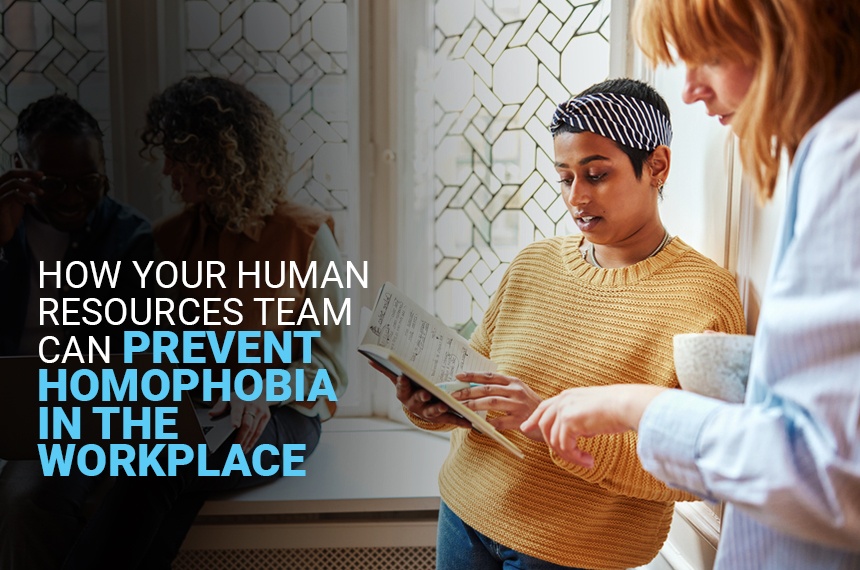Sexism in the workplace is still very much a reality in Australia. It is often an expression of control and power, manifesting in a range of overt and covert actions.
For instance, Australian male workers are paid $25,000 a year more than their female counterparts on average. Men are also occupying more leadership roles, as evidenced by the fact that 34% of Australian boards and governing bodies have no female directors while only 0.9% don’t have any male directors.
There is no legal obligation for companies to fire employees who display harassing behaviour outside the workplace; however, more employers are becoming more willing to do so — especially when this behaviour is out for the public to see.
In this article, we will explore the use of a digital footprint check as a solid countermeasure to prevent resorting to disciplinary action against your staff over misconduct in and outside the workplace.
-
Getting into the discourse
As we delve into the discourse, we will notice many terms getting thrown around often. It’s important to understand them so we can engage in the conversations around workplace sexism more actively. These definitions are taken from the summary report by VicHealth.
Violence against women pertains to all kinds of violence done on women including intimate partner violence, sexual violence and workplace sexual harassment.
Workplace sexual harassment refers to unwelcome behaviours (verbal and non-verbal) that give rise to feelings of offence, humiliation, or intimidation. It includes explicitly sexual hostility, gender-based insults, unwanted sexual attention, and sexual coercion.
Examples of workplace sexual harassment include jokes of a sexually offensive nature, questions about a person’s sex life, repeated requests for dates, displaying sexually offensive posters or explicit emails and text messages.
Gender-based discrimination peratins to the inequalities that are based on gender such as unequal access to power, resources, or opportunities that perpetuate health, social, and/or economic status inequalities.
As an organisation, we should all aspire for the workplace to be a safe space for all our employees, regardless of gender. It is imperative that we achieve gender equality, which refers to the equal consideration of the differences between men and women’s behaviour and needs, and gender equity, which requires gender-specific programs and policies to end existing inequalities.
How does sexism impact work at an organisational level?
When insufficiently addressed, sexism can lead to waste of human resources, rendering the workforce inefficient:
- roles not being appropriately assigned to the right people;
- negative impacts on a worker’s job performance and satisfaction;
- increased churn rate;
- damage organisation’s reputation due to publicly perceived lack of commitment to diversity and inclusion and potential legal issues
- lack of equal opportunities for career development
- Inability to attract and retain talent
Sexism also costs organisations. In a report by the Deloitte Access Economics, the cost of workplace sexual harassment to the Australian economy was estimated to have been around $3.8 billion in 2018.
There is also the lost potential for revenue growth when workplaces are not able to have a diverse mix of people with different genders, races, and sexual orientations. This is because such diversity and inclusiveness often precipitate innovation, creative output, and better performance.
How does sexism impact work at an individual level?
In an eSafety Commissioner’s report, it is found that women experiencing high levels of online abuse suffer from damage to their self-esteem, confidence, and feelings of personal safety.
In a survey conducted by VicHealth, 75% of women experience unwanted or unwelcome sexual behaviour at work. These forms of workplace violence give rise to a lot of personal and career roadblocks for women and non-binary folks, including:
- jeopardised feelings of safety
- harm to mental and physical health
- inability to free express oneself
- tension with other members of the workforce
- absenteeism
- presenteeism
- decreased morale
Case study: Timely employee gets ‘canceled’ and fired over sexist behaviour
Clementine Ford, a feminist writer, public speaker and media personality, is often the recipient of online abuse. In late 2021, Clementine posted on Facebook about a Timely employee who had been sending her abusive messages. The post, which included screenshots of his messages, was shared on the platform over 110 times and gained close to 2,000 comments.
In many of the comments, people mentioned the ways they were putting pressure on Timely to take action against their employee. This included online reviews of Timely, messages they’d sent the company and their responses and even people tagging Timely’s Facebook account on the post.

A few days after the post was made, the Senior Vice President of Timely responded with a comment on the post with a well thought out video response in regards to the employee’s behaviour.
How to fight sexism in the workplace with digital footprint checks
Sexism in the workplace is a preventable issue, with the right systems put in place to stop sexist behaviours from entering the company in the first place, such as:
- addressing the conditions that precipitate sexist behaviours
- promoting gender equity and equality all throughout the organisation
- effective leadership
- proper implementation of anti-sexist policies and procedures
It was fortunate that Timely handled the incident incredibly well and took action that was in line with their organisational values and policies.
However, how can they (and all organisations) proactively avoid such incidences in the future?
Here is where social media screening comes in. This new form of background check has emerged in the past decade in response to the way social media has transformed the job market.
Social media screening, also known as digital footprint check, is a combination of powerful artificial intelligence and expert human analysis that highlights any red flags in your candidates’ online activity, whether it’s on social media, forums, the Dark Web, news stories and more.
When integrated into an organisation’s hiring process, a digital footprint check can determine a candidate’s potential risks, cultural fit and alignment with their values. With a digital footprint check, the following will be highlighted:
- Discriminatory behaviours: such as sexism, racism, transphobia and hate speech
- Unprofessional behaviours: such as strong language and online bullying
- Criminal behaviours: such as indications of violence and incitement
A digital footprint check can identify potential racists even before they start entering your workforce.
It also offers all organisations the opportunity to prevent bad hires, protect their reputation and cultivate safe, welcoming workplaces that reflect their values.
Work with CheckSocial
At CheckSocial, we know that one bad hire can throw off the balance of your organisation’s culture. We also believe that women and non-binary folks are entitled to feel safe in the workplace, or any space for that matter.
Our reports do not provide direct advice on whether a candidate is employable. Rather, they flag any behaviour that indicates potential risks to your organisation’s brand, culture and reputation.
In order to reduce the risk of introducing bias or discrimination into the hiring process, CheckSocial uses a consistent framework to assess each and every individual, in addition to utilising an AI-driven method of data gathering to help ensure fairness and balance
Download a free sample report
To get an example of what a digital footprint check looks like, the information they include and the types of content they flag, you can download a free sample report.
The 23-page sample includes:
- A Candidate Risk Score and Cultural Fit Assessment
- An outline of our cultural fit indicators
- Examples of content that indicate discriminatory, unprofessional and criminal behaviours
- Examples of other candidate insights



